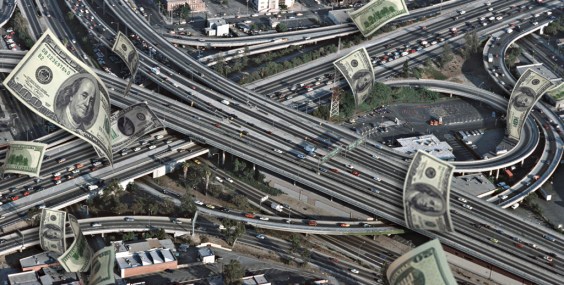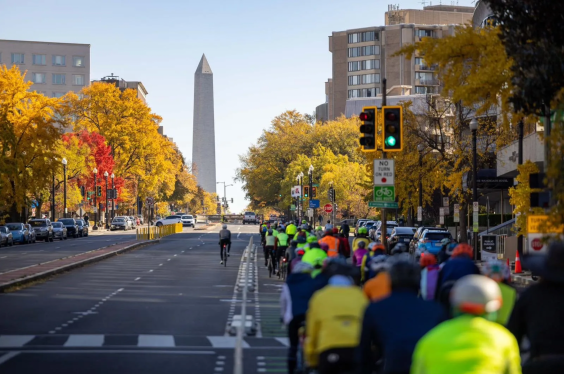Atlanta’s BeltLine of bike and pedestrian trails is raising property values in every place it touches. Denver’s new rail line will create a much-needed link between Union Station downtown and the airport, 23 miles away. Miami is building 500 miles of bike paths and trails. Los Angeles is breaking new ground with everything from rail expansion to traffic light synchronization. And Salt Lake City’s mayor bikes to work and, by increasing investment in bike infrastructure, is encouraging a lot of others to join him.
At this week’s Washington Post forum on transportation, five mayors from this diverse set of cities spoke of the challenges and opportunities they face as they try to improve transportation options without much help or guidance from the federal government.
Speaking of the feds:
Mayor Kasim Reed of Atlanta is tired of Congress not doing its job. “Cities don’t get to kick the can,” he said. And even if the feds aren’t ready to make big investments, private and foreign investors are reportedly itching to get a crack at U.S. infrastructure, but there’s been no good process for doing so. Reed wants the federal government to play a convening role, bringing mayors together with private investors they can pitch projects to.
And either way, he said, if the federal government is providing less funding to cities for transportation, “we think they need to have a little less say” -- except when it comes to safety. But Denver Mayor Michael Hancock says there’s an upside to the gridlock in Washington: “Cities are being more creative.” And Salt Lake City Mayor Ralph Becker says the Obama administration has been a great partner -- pointing especially to the TIGER program and the HUD/DOT/EPA Partnership for Sustainable Communities.
New projects:
Los Angeles Mayor Eric Garcetti is excited about intelligent transportation technology, like the traffic signal synchronization his predecessor, Antonio Villaraigosa, pioneered. And LA’s Expo line -- which he dubbed the Beach-to-Bars line -- opens soon, turning a two-hour slog through traffic into a 45-minute pleasure cruise. He says it’ll open up access to the Philharmonic and sports venues that, these days, are often avoided because the trip is too hellish.
But Garcetti is already on to the next thing. To him, that thing is autonomous cars. He thinks LA will be a natural home for those. In fact, he openly acknowledges that his push to build BRT lanes is all in the interest of turning them into autonomous vehicle lanes a few years down the road. That's right -- despite the visionary strategic plan LA just released, Garcetti wants to turn road space over from efficient modes to less efficient ones.







